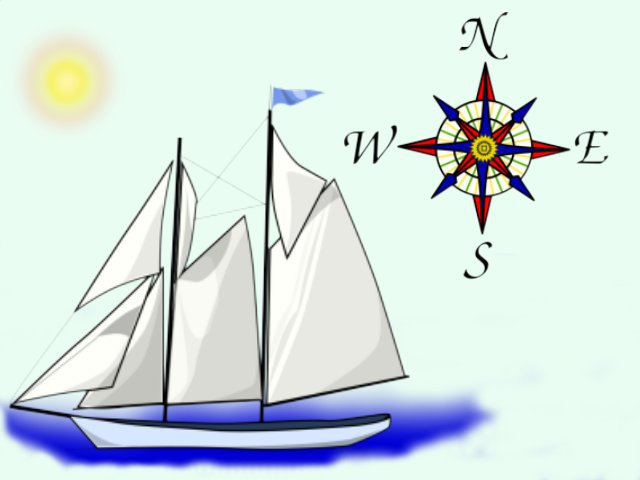Search results
A Family History of Chivalry
August 20, 2012 by ramona
Filed under Articles, Family History, Latest News
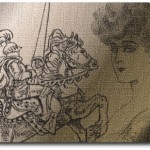 One of the most enjoyable things about researching your family history is learning about some lesser-known historical facts. This can be even more exciting when you discover that your ancestors had a part to play.
One of the most enjoyable things about researching your family history is learning about some lesser-known historical facts. This can be even more exciting when you discover that your ancestors had a part to play.
For example, it can be a thrilling moment when you discover that there was a knight in your family tree.
It can be a bit of a surprise if you find out that the knight was a woman.
During the middle ages, there were several orders of knighthood for women such as:
The Order of the Hatchet
Founded by the Count of Barcellona in 1149, The Order of the Hatchet honored the women who fought against the Moors in defense of the town of Tortosa. The Order granted the lady knights precedence over men at public assembly as well as an exemption from taxes.
The Order of the Glorious Saint Mary
Loderigo d’Andalo, an Italian nobleman from the town of Bologna founded The Order of the Glorious Saint Mary in 1233. Later approved by Pope Alexander IV in 1261, this was the first of the religious orders of knighthood granted to women.
The Order of the Garter
The Order of the Garter was granted to 68 women between the years 1358 and 1488. Many of the women appointed to this order were wives of knights of the order or those of noble blood: although, there were members who were neither. A symbol of the Knights of the Garter is a garter worn upon the left arm; many such are seen on the headstones of those inducted into the order.
The term for a woman who has been knighted is “Dame”.
If you find this title associated with one of your ancestors it will be because she belonged to an order of chivalry. Often these titles are only held for life and are not hereditary.
To learn more about medieval genealogy visit The Foundation for Medieval Genealogy but first remember to download your Family Tree Chart available with your 30-day free trial to Genealogy Beginner
Is There Gold in your Family Tree?
August 14, 2012 by ramona
Filed under Articles, Genealogy Research Resources, Latest News, Sharing Genealogy Information
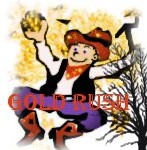 One of the most enjoyable things about climbing your family tree is discovering ancestors who were involved in one of histories great events.
One of the most enjoyable things about climbing your family tree is discovering ancestors who were involved in one of histories great events.
August 16th marks the anniversary of the Klondike Gold Rush and any genealogy beginner that descends from one of the miners or “Stampeders” who set off to strike it rich in 1897 needs to know about Yukon GenWeb.
The Yukon GenWeb is a compilation of free genealogy resources loaded with links and information to all things related to the “last great gold rush”. Their resources include a listing of related Archives & Libraries, Books and Publications, Yukon Cemeteries, Census Returns, Church Records and Registers.
Some of the highlights of their resources include:
- A collection of Directory Records with a link to Ferguson’s 1901 Alaska/Yukon Directory, which lists over 24,200 gold rush participants
- Pioneer Biographies in their Family Records collection
- Relevant First Nations information
- Immigration records including Border Entry, 1908-1918: List of Ports, Dates and Microfilm Reel Numbers
- Passenger Lists, 1865-1922
- Land Titles Records
- Military Records
Before you head off to search for your Gold Rush ancestors make sure you sign up for a 30-day free trial membership to Genealogy Beginner and download your complimentary family tree charts and research tracking forms.
You are going to need them when you start exploring the Pan for Gold Database, North West Mounted Police (NWMP) – Personnel Records, 1873-1904, Manager & Proprietors of Historic Yukon & Alaska Roadhouses, Hotels and Saloons plus so much more!
Irish Surname Resources
July 23, 2012 by ramona
Filed under Articles, Genealogy and Surnames, Introduction to Genealogy, Latest News
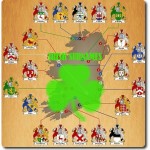 Are you an O’Mally or an O’Neil?
Are you an O’Mally or an O’Neil?
If you are a genealogy beginner in search of Irish surname resources you are in luck because you are among the millions of fortunate family tree fanatics who can draw from a wide variety of genealogy resources.
To get started you might want to check out this fantastic Irish Surname Infographic which gives an at-a-glance overview of the top twenty most common Irish surnames.
Other information you can find on the infographic include:
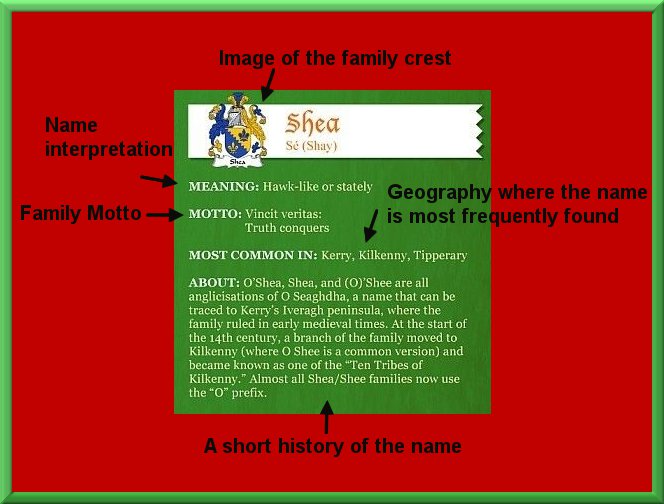
Another fantastic resource to check out is Irish Central an online magazine packed with all things Irish including an in depth article explaining the top 100 Irish surnames.If you already know about your Irish surname and you are ready to start digging deep for your Irish roots try stopping by Irish Genealogy where you can search almost three million pre-20th century Church records for FREE.
Want more resources? Try Genuki Ireland for links on where to research:
INFORMATION RELATED TO ALL OF IRELAND
|
|
Before you get started on your Irish family history research, don’t forget to download your Research tracking forms and Family Tree Charts. Available with your 30-Day FREE TRIAL MEMBERSHIP to Genealogy Beginner
Searching for Immigrant Ancestors
June 16, 2012 by ramona
Filed under Articles, Getting Started in Genealogy, Introduction to Genealogy, Latest News
 Unless you are of aboriginal descent, your ancestors came to North America as immigrants.
Unless you are of aboriginal descent, your ancestors came to North America as immigrants.
Europeans have been making the journey to North American shores since the first recorded settlement by Vikings in L’Anse aux Meadows (Newfoundland, Canada) in 1000 AD. Although colonization truly did not begin until 1492 when Columbus headed his Spanish expedition in search of trade routes and instead found a new land.
In the following centuries, the North American population grew with immigrants of all races and nationalities. From those seeking religious freedoms to those who suffered forced immigration. They came by ship in droves and ever since, we have been looking back, seeking our immigrant ancestors.
The Immigration Brick Wall
For many beginning genealogists this is the point where they first encounter a brick wall in their research. Up to this point, the search for records has been confined to home shores and filling out the spaces on family tree charts has gone relatively smoothly. Then all of a sudden your ancestors disappear from the records… and you do not know where they went.
This is often the point in family history research where new researchers first come across an immigrant ancestor. Unless family bibles and/or stories offer a clue, it leaves researchers asking the questions. Where do I look now, who am I looking for and when did they emigrate?
Immigration and Name Changes
Before you can know where and when to look you will need to know who it is you are looking for. This may sound like a silly statement however; it is not unusual for immigrant ancestors to change their names. Name changes happened for a multitude of reasons from letter combinations and symbols that were not compatible with the English language to a desire to sound more American.
For example, you may have found a family patriarch listed in North American records as John Weaver but if he emigrated from Germany, you may actually need to be searching for Johan Webber.
Where to Begin Your Search
If the ancestor you are hunting for came from overseas, you may not have a birth or marriage record to answer the question of where they came from. Three excellent sources to consult should this be the case are:
- Census Records (which could also give you a clue as to when they emigrated)
- Death Records (if country of birth is not listed the names of listed parent could offer a clue)
- Newspapers (Wedding and anniversary announcements in addition to obituaries often contain biographical information that could aid in pinpointing your ancestors country or birth)
When Did They Emigrate
Your best starting point for unearthing the date of your ancestors emigration is the census records. The first census for the United States was taken before the ratification of the American Constitution in 1790. Since then a Census was taken every ten years.
In Canada, the first census occurred in 1666 in what was then New France. However, the first national census was not taken until 1871 and was followed by subsequent enumerations every five years. Locating the first census your ancestor was found in should help narrow down your search for an emigration year.
Once you have the data your next step is to begin locating records of immigration and ships lists. A visit to Library and Archives Canada or the US National Archives should be your first stop, as they will direct you to further research sources.
Do not forget to sign up for a 30-day free trial membership to Genealogy Beginner and download your complimentary family tree charts and research tracking forms.
About Genealogy Trees
June 2, 2009 by Chris
Filed under Articles, Blank Family Tree, Genealogy Reports and Charts, Introduction to Genealogy
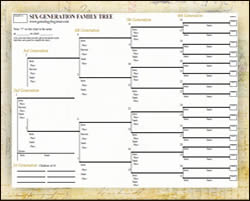 Picture this, you have gathered all of the information for your immediate family and grandparents and are ready to start documenting it. You have looked all over the internet and have found so many types of family tree charts that you are now completely overwhelmed. What type of tree should you use? My advice to the beginning genealogist is…for now… just keep it simple. Start off with your family group sheet and a basic six generation pedigree chart. At this point you do not need to go to any expense ( we have some complimentary ones to get you started just click the links above) as you still have so much research and learning ahead of you.
Picture this, you have gathered all of the information for your immediate family and grandparents and are ready to start documenting it. You have looked all over the internet and have found so many types of family tree charts that you are now completely overwhelmed. What type of tree should you use? My advice to the beginning genealogist is…for now… just keep it simple. Start off with your family group sheet and a basic six generation pedigree chart. At this point you do not need to go to any expense ( we have some complimentary ones to get you started just click the links above) as you still have so much research and learning ahead of you.
You don’t need more than a simple, easy to follow, straight forward form. As you continue with your research you will gain a better idea of exactly what chart you want to use for presentation purposes.
The chart you use while documenting your initial findings should be:
- Simple,
- Well laid out
- Clean in design
So you can easily record your information onto it in a way that will be understandable in the future, when I was just beginning having lots of space for writing was an important factor. A six generation chart will work well for that purpose. Later, as your family tree expands, so can the size of your pedigree chart and as your experience grows you will find larger charts more manageable and easy to read.
Find out Genealogy Trees

